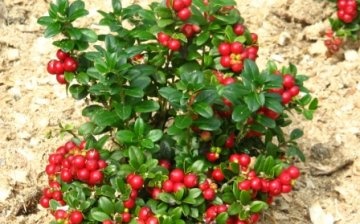Lingonberry garden
Lingonberry is a fruiting shrub, the berries of which have not only nutritional but also medicinal value. For quite a long period of time, lingonberry was considered an exclusively wild crop. It was possible to meet it in the northern forest zones, in sphagnum bogs, and lingonberry was especially widespread in the tundra.
Over time, these berries began to grow at home. Thus, the lingonberry garden appeared, which gradually began to enter garden culture in the 60s of the last century.
Nowadays, lingonberry garden is quite popular, which it owes not only to its delicious and extremely useful berries, but also to its beautiful decorative appearance. Due to its interesting and beautiful appearance, the garden lingonberry can become an excellent decoration for almost any garden.
It is necessary to grow lingonberries in acidic soil. This culture tolerates frost and drought well enough, but at the same time does not tolerate stagnation of moisture in the area of its roots. As for lighting, the lingonberry grows well in shady forests, therefore, shaded areas of the garden will be suitable for growing it, however, in this case, the lingonberry garden can be more of an ornamental than a fruit plant. To obtain a good harvest, shrubs of this type must be planted in well-lit places.
Lingonberry garden bears fruit twice a year. She loves moderate watering, but great care must be taken with fertilizers, since the plant can die from large doses of fertilizers.




Undoubtedly, in order to grow wild lingonberries on a personal plot, you need to seriously think about its location, in terms of sun illumination, and also to ensure the normal acidity of the soil and moisture in the moss, or soil.
If you use the roots of "garden lingonberry", then indeed, it is somewhat easier to grow it, and easier.
But, the taste of the garden lingonberry will be different, not as tart and bright as that of the taiga ...